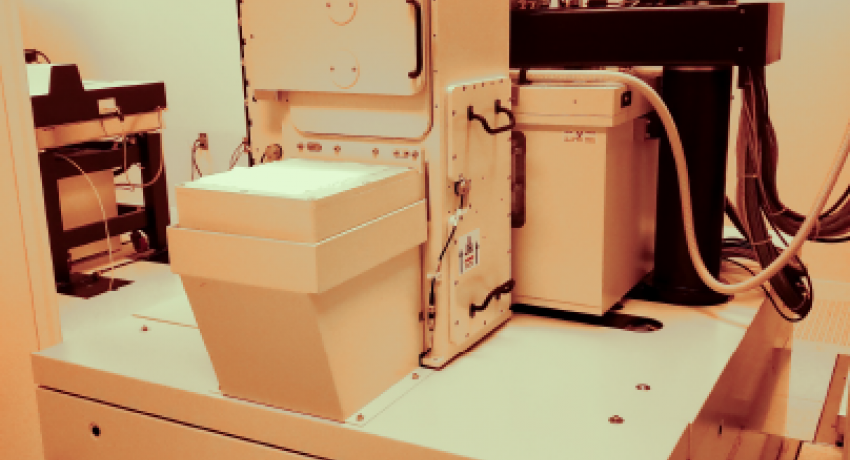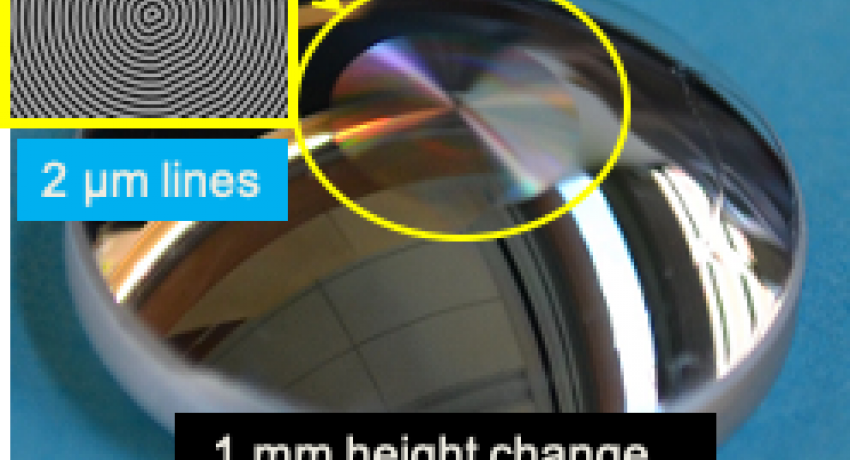Electron beam lithography can achieve the smallest features at about 10nm. It is a maskless technique that, like the laser writer, uses a CAD file for the pattern and can write the pattern directly on the substrate. The electron beam current of Penn State's Raith 5200 is continuously variable with a minimum spot-size of 2nm which is why such small features can be exposed. The spatial resolution is very good and has control of pitch's on the order of angstroms.
The Raith 5200 and Raith EBPG5200Plus at Penn State have a specialized stage that allows them to expose substrates up to 10 mm thick and with extreme topography and curved surfaces.
Resolution < 10 nm
Overlay < 15 nm
Equipment
Raith EBPG5200 and Raith RBPG5200Plus - Electron Beam Lithography
The Raith EBPG5200 system is used to directly write fine nanometer features in resist. Features as small as 14nm have been achieved. The system has a custom stage with 10mm of Z-height travel for writing curved surfaces as well as parts with extreme topography. The system can handle small parts through 150mm (6 inch) wafers and 5" x 5" mask plates.
The Raith EBPG5200 has been paired with the data (pattern) preparation software, Layout Beamer, which is easy to use and has advanced features such as proximity effect correction.
| System | Substrates | Electron Beam Resists Typically Used |
|---|---|---|
|
|
|
| Lift-off | Pattern for Etch |
|---|---|
|
|
| Resolution | Stitching Accuracy | Overlay Accuracy | Direct Write Accuracy |
|---|---|---|---|
|
|
|
|



